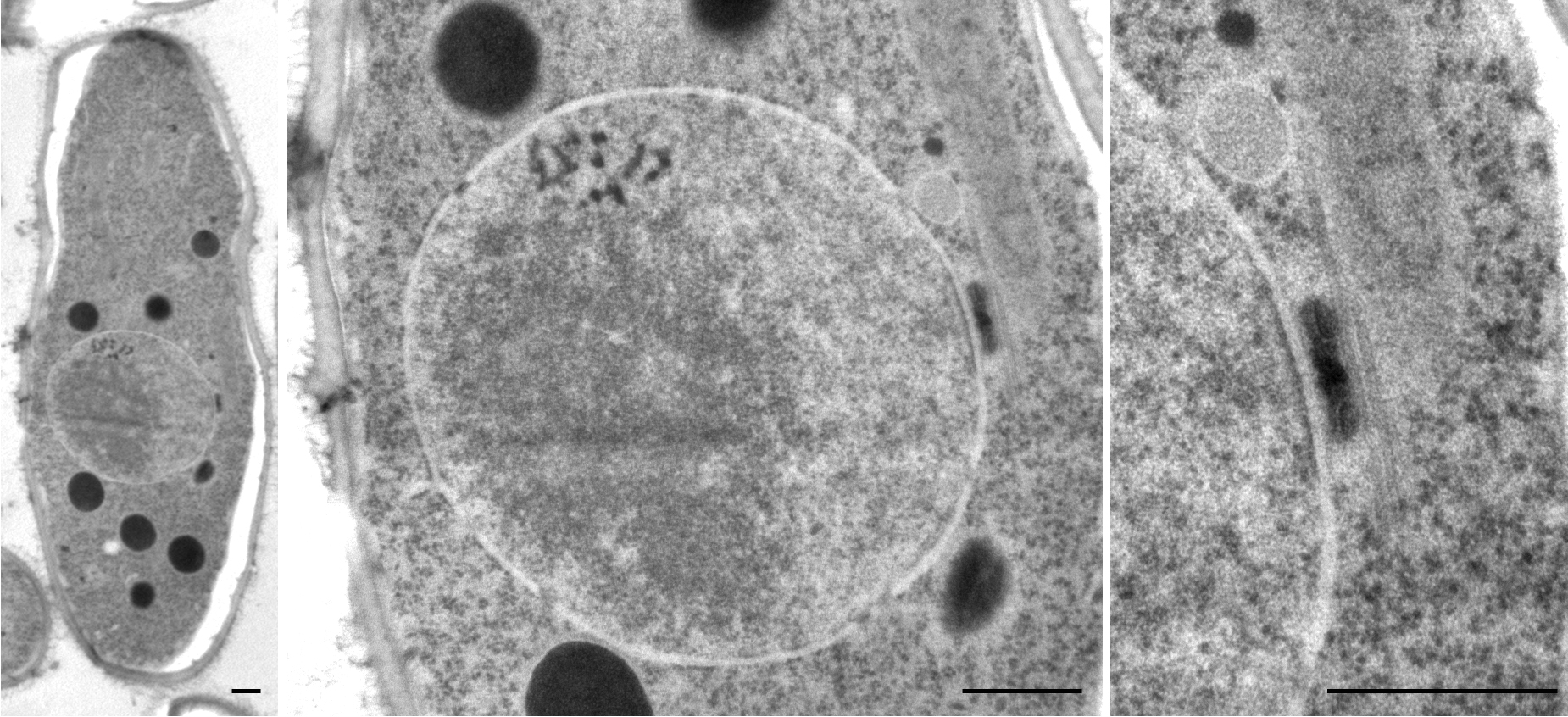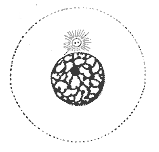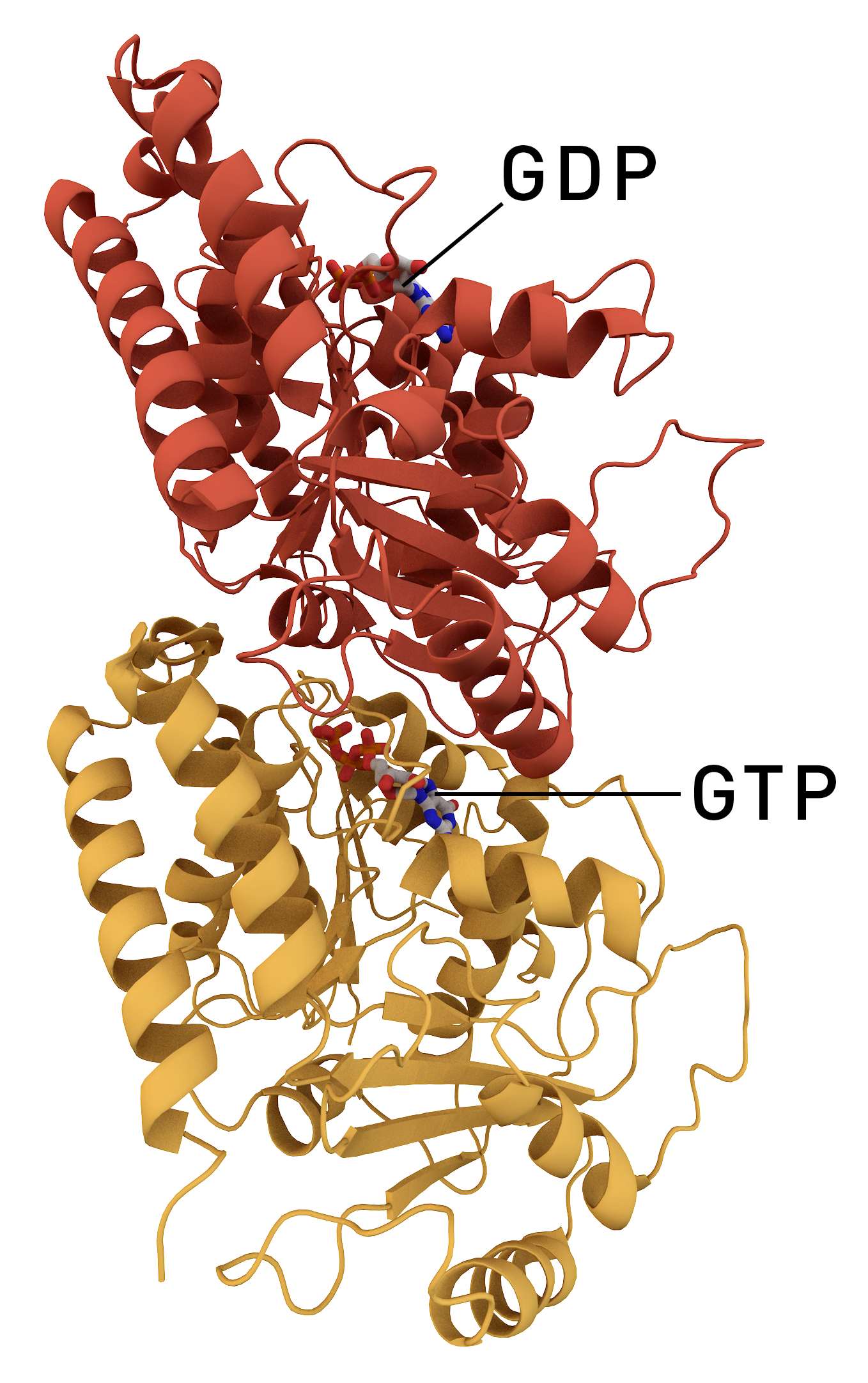|
Pom1
Pom1 is a polarity protein kinase in fission yeast, ''Schizosaccharomyces pombe'' (''S. pombe''), that localizes to cell ends and regulates cell division. As the cell lengthens, the level of Pom1 in the middle declines, which triggers mitosis.Bahler, J., and Pringle, J.R. “Pom1p, a fission yeast protein kinase that provides positional information for both polarized growth and cytokinesis.” Genes and Development 12, 1356-1370 (1998). The genebr>''pom1''codes for a protein 1087 amino acids long with the protein kinase domain likely located at the carboxyl terminus. Pom1 regulates a signaling pathway that includes Cdk1 and ultimately regulates mitotic entry.Moseley, J.B., Mayeux, A., Paoletti, A. and Nurse, P. “A spatial gradient coordinates cell size and mitotic entry in fission yeast.” Nature 459, 857-861 (2009). Cells with mutant pom1 form a septa and growth zone, but show a host of abnormalities including misplaced or misoriented septa, bi-polar growth replaced with r ... [...More Info...] [...Related Items...] OR: [Wikipedia] [Google] [Baidu] |
Pom1 Model
Pom1 is a polarity protein kinase in fission yeast, ''Schizosaccharomyces pombe'' (''S. pombe''), that localizes to cell ends and regulates cell division. As the cell lengthens, the level of Pom1 in the middle declines, which triggers mitosis.Bahler, J., and Pringle, J.R. “Pom1p, a fission yeast protein kinase that provides positional information for both polarized growth and cytokinesis.” Genes and Development 12, 1356-1370 (1998). The genebr>''pom1''codes for a protein 1087 amino acids long with the protein kinase domain likely located at the carboxyl terminus. Pom1 regulates a signaling pathway that includes Cdk1 and ultimately regulates mitotic entry.Moseley, J.B., Mayeux, A., Paoletti, A. and Nurse, P. “A spatial gradient coordinates cell size and mitotic entry in fission yeast.” Nature 459, 857-861 (2009). Cells with mutant pom1 form a septa and growth zone, but show a host of abnormalities including misplaced or misoriented septa, bi-polar growth replaced with r ... [...More Info...] [...Related Items...] OR: [Wikipedia] [Google] [Baidu] |
Schizosaccharomyces Pombe
''Schizosaccharomyces pombe'', also called "fission yeast", is a species of yeast used in traditional brewing and as a model organism in molecular and cell biology. It is a unicellular eukaryote, whose cells are rod-shaped. Cells typically measure 3 to 4 micrometres in diameter and 7 to 14 micrometres in length. Its genome, which is approximately 14.1 million base pairs, is estimated to contain 4,970 protein-coding genes and at least 450 non-coding RNAs. These cells maintain their shape by growing exclusively through the cell tips and divide by medial fission to produce two daughter cells of equal size, which makes them a powerful tool in cell cycle research. Fission yeast was isolated in 1893 by Paul Lindner from East African millet beer. The species name ''pombe'' is the Swahili word for beer. It was first developed as an experimental model in the 1950s: by Urs Leupold for studying genetics, and by Murdoch Mitchison for studying the cell cycle. Paul Nurse, a fission yeast ... [...More Info...] [...Related Items...] OR: [Wikipedia] [Google] [Baidu] |
Wee1
Wee1 is a nuclear kinase belonging to the Ser/Thr family of protein kinases in the fission yeast ''Schizosaccharomyces pombe'' (''S. pombe'')Wee1has a molecular mass of 96 kDa and is a key regulator of cell cycle progression. It influences cell size by inhibiting the entry into mitosis, through inhibiting Cdk1. Wee1 has homologues in many other organisms, including mammals. Introduction The regulation of cell size is critical to ensure functionality of a cell. Besides environmental factors such as nutrients, growth factors and functional load, cell size is also controlled by a cellular cell size checkpoint. Wee1 is a component of this checkpoint. It is a kinase determining the timepoint of entry into mitosis, thus influencing the size of the daughter cells. Loss of Wee1 function will produce smaller than normal daughter cell, because cell division occurs prematurely. Its name is derived from the Scottish dialect word wee, meaning small - its discoverer Paul Nurse was ... [...More Info...] [...Related Items...] OR: [Wikipedia] [Google] [Baidu] |
Cdk1
Cyclin-dependent kinase 1 also known as CDK1 or cell division cycle protein 2 homolog is a highly conserved protein that functions as a serine/threonine protein kinase, and is a key player in cell cycle regulation. It has been highly studied in the budding yeast ''S. cerevisiae'', and the fission yeast ''S. pombe'', where it is encoded by genes ''cdc28'' an''cdc2'' respectively. With its cyclin partners, Cdk1 forms complexes that phosphorylate a variety of target substrates (over 75 have been identified in budding yeast); phosphorylation of these proteins leads to cell cycle progression. Structure Cdk1 is a small protein (approximately 34 kilodaltons), and is highly conserved. The human homolog of Cdk1, ''CDK1'', shares approximately 63% amino-acid identity with its yeast homolog. Furthermore, human ''CDK1'' is capable of rescuing fission yeast carrying a ''cdc2'' mutation. Cdk1 is comprised mostly by the bare protein kinase motif, which other protein kinases share. Cdk1, li ... [...More Info...] [...Related Items...] OR: [Wikipedia] [Google] [Baidu] |
Kinase
In biochemistry, a kinase () is an enzyme that catalyzes the transfer of phosphate groups from high-energy, phosphate-donating molecules to specific substrates. This process is known as phosphorylation, where the high-energy ATP molecule donates a phosphate group to the substrate molecule. This transesterification produces a phosphorylated substrate and ADP. Conversely, it is referred to as dephosphorylation when the phosphorylated substrate donates a phosphate group and ADP gains a phosphate group (producing a dephosphorylated substrate and the high energy molecule of ATP). These two processes, phosphorylation and dephosphorylation, occur four times during glycolysis. Kinases are part of the larger family of phosphotransferases. Kinases should not be confused with phosphorylases, which catalyze the addition of inorganic phosphate groups to an acceptor, nor with phosphatases, which remove phosphate groups (dephosphorylation). The phosphorylation state of a molecule, whet ... [...More Info...] [...Related Items...] OR: [Wikipedia] [Google] [Baidu] |
Gene
In biology, the word gene (from , ; "...Wilhelm Johannsen coined the word gene to describe the Mendelian units of heredity..." meaning ''generation'' or ''birth'' or ''gender'') can have several different meanings. The Mendelian gene is a basic unit of heredity and the molecular gene is a sequence of nucleotides in DNA that is transcribed to produce a functional RNA. There are two types of molecular genes: protein-coding genes and noncoding genes. During gene expression, the DNA is first copied into RNA. The RNA can be directly functional or be the intermediate template for a protein that performs a function. The transmission of genes to an organism's offspring is the basis of the inheritance of phenotypic traits. These genes make up different DNA sequences called genotypes. Genotypes along with environmental and developmental factors determine what the phenotypes will be. Most biological traits are under the influence of polygenes (many different genes) as well as gen ... [...More Info...] [...Related Items...] OR: [Wikipedia] [Google] [Baidu] |
Mitosis
In cell biology, mitosis () is a part of the cell cycle in which replicated chromosomes are separated into two new nuclei. Cell division by mitosis gives rise to genetically identical cells in which the total number of chromosomes is maintained. Therefore, mitosis is also known as equational division. In general, mitosis is preceded by S phase of interphase (during which DNA replication occurs) and is often followed by telophase and cytokinesis; which divides the cytoplasm, organelles and cell membrane of one cell into two new cells containing roughly equal shares of these cellular components. The different stages of mitosis altogether define the mitotic (M) phase of an animal cell cycle—the division of the mother cell into two daughter cells genetically identical to each other. The process of mitosis is divided into stages corresponding to the completion of one set of activities and the start of the next. These stages are preprophase (specific to plant cells), prophase ... [...More Info...] [...Related Items...] OR: [Wikipedia] [Google] [Baidu] |
Saccharomyces Cerevisiae
''Saccharomyces cerevisiae'' () (brewer's yeast or baker's yeast) is a species of yeast (single-celled fungus microorganisms). The species has been instrumental in winemaking, baking, and brewing since ancient times. It is believed to have been originally isolated from the skin of grapes. It is one of the most intensively studied eukaryotic model organisms in molecular biology, molecular and cell biology, much like ''Escherichia coli'' as the model bacteria, bacterium. It is the microorganism behind the most common type of fermentation (biochemistry), fermentation. ''S. cerevisiae'' cells are round to ovoid, 5–10 micrometre, μm in diameter. It reproduces by budding. Many proteins important in human biology were first discovered by studying their Homology (biology), homologs in yeast; these proteins include cell cycle proteins, signaling proteins, and protein-processing enzymes. ''S. cerevisiae'' is currently the only yeast cell known to have Berkeley body, Berkeley bo ... [...More Info...] [...Related Items...] OR: [Wikipedia] [Google] [Baidu] |
Interphase
Interphase is the portion of the cell cycle that is not accompanied by visible changes under the microscope, and includes the G1, S and G2 phases. During interphase, the cell grows (G1), replicates its DNA (S) and prepares for mitosis (G2). A cell in interphase is not simply quiescent. The term quiescent (i.e. dormant) would be misleading since a cell in interphase is very busy synthesizing proteins, copying DNA into RNA, engulfing extracellular material, processing signals, to name just a few activities. The cell is quiescent only in the sense of cell division (i.e. the cell is out of the cell cycle, G0). Interphase is the phase of the cell cycle in which a typical cell spends most of its life. Interphase is the 'daily living' or metabolic phase of the cell, in which the cell obtains nutrients and metabolizes them, grows, replicates its DNA in preparation for mitosis, and conducts other "normal" cell functions. Interphase was formerly called the resting phase. However, interp ... [...More Info...] [...Related Items...] OR: [Wikipedia] [Google] [Baidu] |
Microtubules
Microtubules are polymers of tubulin that form part of the cytoskeleton and provide structure and shape to eukaryotic cells. Microtubules can be as long as 50 micrometres, as wide as 23 to 27 nm and have an inner diameter between 11 and 15 nm. They are formed by the polymerization of a dimer of two globular proteins, alpha and beta tubulin into protofilaments that can then associate laterally to form a hollow tube, the microtubule. The most common form of a microtubule consists of 13 protofilaments in the tubular arrangement. Microtubules play an important role in a number of cellular processes. They are involved in maintaining the structure of the cell and, together with microfilaments and intermediate filaments, they form the cytoskeleton. They also make up the internal structure of cilia and flagella. They provide platforms for intracellular transport and are involved in a variety of cellular processes, including the movement of secretory vesicles, organell ... [...More Info...] [...Related Items...] OR: [Wikipedia] [Google] [Baidu] |
Microtubule
Microtubules are polymers of tubulin that form part of the cytoskeleton and provide structure and shape to eukaryotic cells. Microtubules can be as long as 50 micrometres, as wide as 23 to 27 nm and have an inner diameter between 11 and 15 nm. They are formed by the polymerization of a dimer of two globular proteins, alpha and beta tubulin into protofilaments that can then associate laterally to form a hollow tube, the microtubule. The most common form of a microtubule consists of 13 protofilaments in the tubular arrangement. Microtubules play an important role in a number of cellular processes. They are involved in maintaining the structure of the cell and, together with microfilaments and intermediate filaments, they form the cytoskeleton. They also make up the internal structure of cilia and flagella. They provide platforms for intracellular transport and are involved in a variety of cellular processes, including the movement of secretory vesicles, organell ... [...More Info...] [...Related Items...] OR: [Wikipedia] [Google] [Baidu] |
G2 Phase
G2 phase, Gap 2 phase, or Growth 2 phase, is the third subphase of interphase in the cell cycle directly preceding mitosis. It follows the successful completion of S phase, during which the cell’s DNA is replicated. G2 phase ends with the onset of prophase, the first phase of mitosis in which the cell’s chromatin condenses into chromosomes. G2 phase is a period of rapid cell growth and protein synthesis during which the cell prepares itself for mitosis. Curiously, G2 phase is not a necessary part of the cell cycle, as some cell types (particularly young ''Xenopus'' embryos and some cancers)) proceed directly from DNA replication to mitosis. Though much is known about the genetic network which regulates G2 phase and subsequent entry into mitosis, there is still much to be discovered concerning its significance and regulation, particularly in regards to cancer. One hypothesis is that the growth in G2 phase is regulated as a method of cell size control. Fission yeast (''Schi ... [...More Info...] [...Related Items...] OR: [Wikipedia] [Google] [Baidu] |








